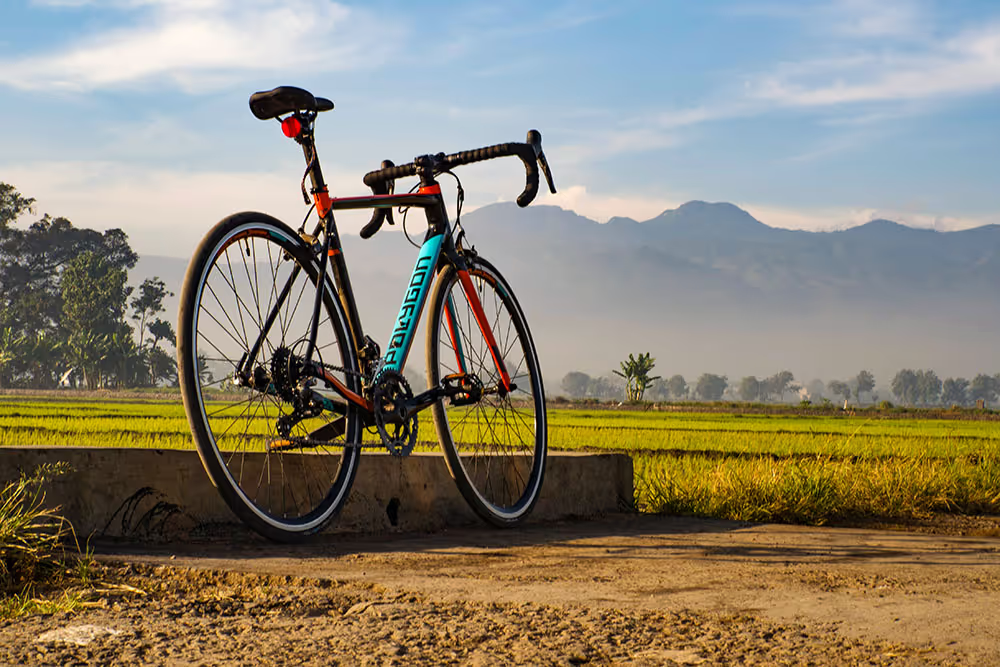Climbing bikes have a certain magic to them. Light, responsive, and designed for one thing — getting you up the mountain as smoothly and efficiently as possible. If you’ve ever crawled up the switchbacks of Sa Calobra or ground your way up the curves of Coll de Sóller, you’ll know just how much difference a few grams can make not just to your speed, but to how the whole ride feels.
But building a proper climbing bike isn’t just about throwing your credit card at the lightest gear you can find. There’s an art to getting the balance right. You want light, yes, but you also want functional, comfortable, and durable. And ideally, you want to build something that doesn’t leave you wondering how you’re going to afford dinner next month.
So, whether you’re building from scratch, upgrading your current setup, or just dreaming of your perfect machine, here’s a proper deep dive into how to build a lightweight climbing bike without wasting your money.
Frame: The Backbone of Your Build
Start here, because everything else depends on it. The frame is the core of your climbing bike, and the right one will give you that responsive, featherlight feel when the road tilts up.
You want carbon. Not because it's trendy, but because modern carbon frames are stiff, light, and can be engineered specifically for climbing. A good carbon frame can weigh under 800 grams and still give you the stiffness you need to transfer power through the cranks.
Brands like Cannondale’s SuperSix EVO, the Canyon Ultimate, or the Specialized Aethos are all popular for this exact reason. They keep the weight low, handle beautifully, and don’t flex under pressure. For a premium feel at a more modest price, Ribble’s Endurance SL R or Orbea’s Orca OMX also offer serious value.
Avoid aero frames for this type of bike. They might look the part, but they come with extra grams and often sacrifice comfort on longer climbs. The idea is to keep things as stripped back as possible.
If you’re trying to save money, a used frame from a reputable brand is often the best place to start. Just make sure it hasn’t been in a crash and check for any damage before you build it up.
Groupset: Mechanical vs Electronic
This is where a lot of people end up overspending. You don’t need the fanciest electronic groupset just because it looks cool in photos. Yes, Shimano Di2 or SRAM eTap AXS systems are slick, precise, and clean, but they come with more weight, more cost, and the added stress of battery life — not ideal if you’re climbing long days in Mallorca heat and forget to charge.
Mechanical groupsets still have a solid place in climbing bike builds. Shimano’s mechanical Ultegra or 105 groupsets are smooth, reliable, and proven. They’re also lighter than their electronic counterparts. It’s what I use on one of my bikes, and it just works. No batteries to worry about. No missed shifts because something lost connection. You pull the lever, it clicks. Job done.
If you want to save every gram, then yes, Dura-Ace Di2 or SRAM Red eTap will shave a little weight and give you that high-end feel. But for most riders, mechanical Ultegra hits the sweet spot for performance and price. Especially if you're used to big days and want less to think about.
Wheels: The Biggest Upgrade You Can Make
After the frame, wheels are your next big weight-saving opportunity. A set of lightweight climbing wheels can change how a bike feels instantly.
Look for wheels with low rotational mass and a shallow rim profile. You don’t need deep-section carbon for a climbing build — in fact, the added weight can make your life harder when you're grinding uphill. Plus, shallower rims are less twitchy in crosswinds, which makes descending twisty Mallorca roads a lot less nerve-wracking.
A great example is the Hunt 34 Aero Light Disc or the Zipp 202 Firecrest. Lightweight, reliable, and designed for climbing. If you're shopping on a tighter budget, Fulcrum Racing Zero or Mavic Ksyrium SL wheels also offer a great mix of performance and price.
When choosing wheels, keep an eye on internal rim width. Wider rims can support wider tyres at lower pressures, which can improve grip and comfort on rough tarmac, especially on Mallorca’s country lanes.
Also — and this might seem obvious — make sure your wheels are tubeless-ready. That alone will save you weight and lower your risk of punctures.
Tyres and Tubes: Don’t Neglect the Details
You can have the best wheels in the world, but if you’re running old, heavy tyres with bulky tubes, you’re not doing yourself any favours. Tyres make a huge difference to rolling resistance, grip, and overall feel.
For a climbing bike, you want light and fast. Continental GP5000s are the go-to choice for a reason. They roll fast, grip well, and still offer solid puncture protection. Vittoria Corsa N.EXT is another great option, especially if you want that supple feel of a race tyre without the risk of a flat every 20km.
Go tubeless if you can. It takes a bit more setup, but the lower pressure and reduced risk of pinch flats are worth it. And it cuts more weight than you might expect, especially when you get rid of the butyl tubes and go fully tubeless with sealant.
Avoid cheap tyres that promise speed but deliver poor grip or constant punctures. You’ll save a few quid up front, but you’ll lose it in café stops and inner tubes by the end of the week.
Cockpit: Where Weight Adds Up Quickly
Handlebars, stem, seatpost — these parts might not seem important, but they all add up. A heavy alloy cockpit can easily cost you 400 to 500 grams over a good carbon setup.
Brands like Zipp, ENVE, and Deda make excellent lightweight options, but if you’re on a budget, look at FSA or Ritchey. You don’t need aero bars or flared gravel-style cockpits on a climbing bike. Just classic, round bars that are light and stiff.
One word of caution: don’t go ultra-light just for the numbers. Comfort and fit are more important than shaving ten grams. Choose a shape that works for your hands, and make sure your position is dialled in. A poorly fitting bike — no matter how light — is going to feel miserable by the time you reach the top of the climb.
Saddle and Seatpost: A Balance Between Comfort and Weight
This is one area where you really want to test before you commit. A lightweight saddle might look great on paper, but if it ruins your ride after 20 minutes, it’s not doing you any favours.
A great climbing saddle is light, yes, but also supportive. Something like the Selle Italia SLR Boost or the Fizik Antares Versus Evo strikes a nice balance. For budget-conscious riders, the Prologo Dimension is a solid pick. All of these come in under 200 grams and have just enough padding to keep you happy on long climbs.
Seatposts are a straightforward upgrade. Go carbon for the extra comfort and vibration damping. Just make sure it fits your frame and is compatible with your saddle rails.
Brakes and Rotors: Light Doesn’t Mean Weak
It’s tempting to skimp here, but remember, you still have to come back down the mountain. Especially on Mallorca roads, where a descent from Randa or Orient can involve sharp bends and tricky cambers.
Stick with branded, well-tested disc brake systems. Shimano’s Ultegra or Dura-Ace, SRAM Force or Red — all are excellent and offer strong, consistent braking. Match them with 140mm rotors unless you’re a heavier rider or riding with a lot of gear, in which case 160mm might suit you better.
Avoid third-party ultralight rotors unless you really know what you’re getting. Warping, noise, and weak braking are common issues. Saving 20 grams here just isn’t worth it.
Also, always bed in your pads before the big ride. It’s not something you want to leave until the first hairpin descent.
Drivetrain Choices: Gearing for the Climbs
This is one area where a lot of riders get caught out. You want gearing that suits your riding style, not just what looks fast.
If you’re riding climbs like Coll de Sa Batalla or the steady ramps up to Randa, you want a compact or mid-compact setup. A 50–34 up front with an 11–30 or 11–34 cassette is ideal. This gives you enough range for steeper gradients without spinning out on descents.
SRAM’s 12-speed 10–33 setup is another good option, offering small jumps between gears without losing low-end climbing range. Shimano’s newer 12-speed Ultegra and Dura-Ace setups also give more flexibility with cassette options.
Avoid gearing that’s too aggressive unless you’re a seriously powerful rider. There’s no point struggling up a climb because you wanted to look “pro” with a 39–28 combo.
Final Thoughts and Common Mistakes to Avoid
If you’re serious about climbing, you don’t need to spend £10,000. You need the right frame, smart component choices, and a setup that actually suits your riding.
Avoid chasing the lightest setup if it compromises comfort, control, or reliability. Avoid mixing incompatible parts to save money. And avoid copying pro builds from Instagram without thinking about your own body, fitness, and budget.
And one last point — don’t forget to weigh the whole bike, not just individual parts. Sometimes it’s the bottle cages, pedals, or even a bulky GPS mount that sneaks the grams back in.
Come and Test It Out in the Mountains
Once you’ve got your dream climbing bike dialled in, there’s only one thing left to do — ride it somewhere that does it justice.
At VeloCamp Mallorca, we ride some of the most beautiful and challenging climbs in Europe. You’ll get to test your setup, dial in your position, and learn what works over real-world terrain. From long drags up to Sa Calobra to the rolling switchbacks through the Tramuntana mountains, this is where climbing bikes come alive.
If you’re thinking about joining us, check out the website. We’d love to have you join one of our training camps.








